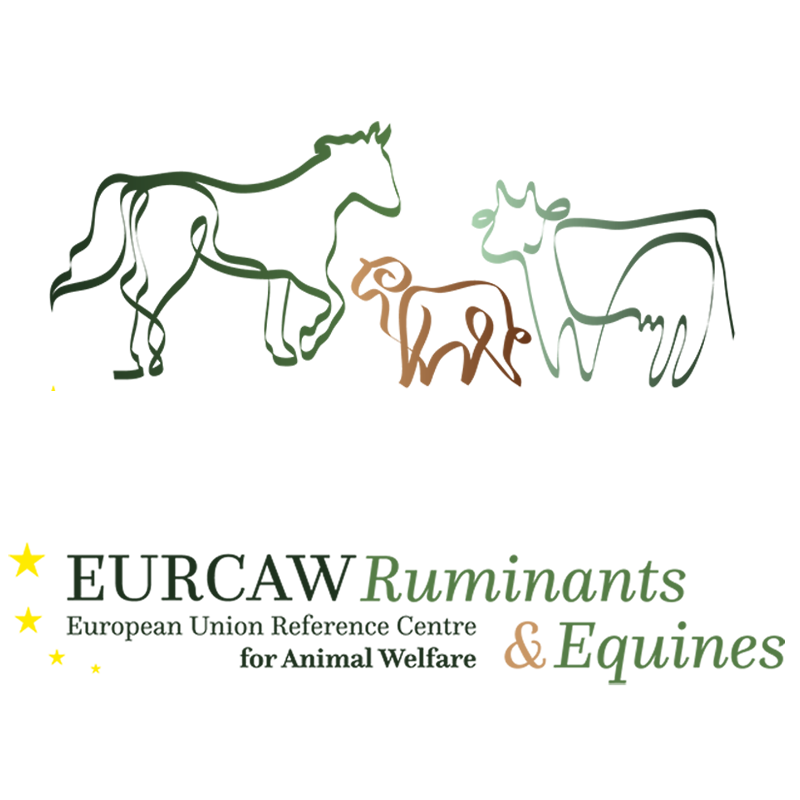Training
EURCAW Ruminants & Equines promotes training initiatives addressed to official inspectors involved in control activities concerning the welfare of ruminants and equines, as well as policy workers and their Supporting Bodies of the Competent Authorities in EU Member States.
Training Needs Analysis
During the first Work Programme (2021-2022), the EURCAW Ruminants & Equines developed and piloted a web-based Training Needs Analysis (TNA) programme to design the long-term training strategy for the Centre. The aim of the TNA was to identify knowledge and skills gaps that prevent the Member States’ Competent Authorities, policy workers and their Supporting Bodies from effectively performing and excelling in their roles in regard to the welfare of ruminants and equines.
To facilitate data collection and reporting of the TNA, a Training Needs Analysis Platform (TraNAP) has been developed. It provides a centralised environment to conduct the TNA on a regular basis, with the aim of establishing a permanent training observatory to define the Centre’s training strategy and to address and support relevant training activities in Member States.
Click here to access TraNAP
Standards for training
In order to provide the EU Competent Authorities and their Supporting Bodies with standard training materials on the outcomes of the EURCAW activities at country level, the Centre is developing Toolkits for Trainers, which can be disseminated through national or local cascade training initiatives. The Toolkits for Trainers currently available are:
- Visual and tactile contact in individually housed calves
- Environmental enrichment for ruminants and equines
- Frequency and quantity of milk feeding to dairy calves
Additional training toolkits are being developed in the near future.
Each Toolkit is composed of the following items:
-
- An example of a syllabus aimed at helping trainers to design training. It describes the specific learning objectives of the course, the beneficiaries, the suggested programme, the training methodologies, the assessment method, the list of speakers, and the contact details of the training organiser.
- A Power Point presentation to be adopted by the Trainers in English (the Master Version) or in the country mother tongue after translation
- A Word file titled “Explanatory texts supporting cascade training” that provides the future Trainers with the narration accompanying each slide of the PowerPoint Presentation. It is structured to easily translate the content into the local mother tongue for customisation.
- The relevant Factsheet(s) produced by the Centre
- A knowledge assessment test to be used at the end of the training session. This assessment tool can also be translated by the course organiser. It includes the key points (model answers) to the assessment questions.
- Video recorded lectures for each topic constitute an essential complementary item: they are available in English on a dedicated eLearning platform and aim at enhancing the effectiveness of the training toolkits.
How to access training toolkits
To register for access to the available Toolkits and/or enrol in the eLearning training sessions, please click here (next registration phase 1 October – 9 November, 2024).
Alternatively, you can send an email to eurcawretraining@izs.it stating your full name and affiliation. The Centre’s team will send you all the relevant instructions to access the reserved area of the training platform.
Webinars
The Centre periodically organises interactive and engaging webinars, aimed at sharing the latest technical and scientific activities outcomes, and to support knowledge dissemination and capacity building within EU Competent Authorities and their Supporting Bodies.
How to participate in webinars
To enrol in future webinar(s), please click here. The next webinar is on Visual and tactile contact in individually housed calves. The deadline to register is 25 November, 2024.
Training activities and materials
If you have access to training material from your Member State that may be useful for the EURCAW Ruminants & Equines, please send it to: info@eurcaw-ruminants-equines.eu. If possible, it would be appreciated in English and with a short comment on why this example can be useful in the training domain.
Standard model for training evaluation
A common weakness of structured and complex training systems (whatever the subject) is impact assessment and follow-up. This hinders the design of further training initiatives on the same or related topics, in line with a virtuous circle of continuous learning.
Therefore, the Centre is creating ad hoc electronic tools based on the Kirkpatrick “Four levels of evaluation” method. They will be routinely applied internally to the training initiatives promoted by the Centre and presented to the Competent Authorities during the next EURCAWs joint annual meeting for a wider and standardised adoption.


